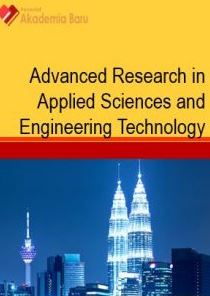Response Surface Method for Modelling the Effect of CO2 in Brine/Waxy Oil Interfacial Tension during LSW-WAG Enhanced Oil Recovery
DOI:
https://doi.org/10.37934/araset.22.1.5468Keywords:
Low salinity waterflood, water alternating gas, interfacial tension, response surface methodology, central composite design, enhanced oil recoveryAbstract
Recent research on the combination of low salinity waterflood (LSW) with CO2 water-alternating gas (WAG) has received significant attention due to its effectiveness in recovering residual oil in a mature field. The solubility of CO2 increases with decreasing brine salinity; and the presence of CO2 in the injected water is expected to reduce the water/oil interfacial tension (IFT) leading to the release of trapped oil previously held in the rock by capillary forces. However, to date, little study has been done on the fluid/fluid interaction during the LSW-WAG process involving waxy crude oil and injected brine. In this study, two models have been developed from experimental IFT measurements that can facilitate the prediction of the CO2 effect in the interfacial tension between oil/water interface in the presence and absence of CO2. This objective is achieved by modelling the effect of pressure, brine salinity, and CO2 on oil/water IFT with the response surface methodology (RSM) using the modified central composite design method (CCD) for the experimental design. Based on the developed model, the optimum values of input variables were calculated by analysis of variance (ANOVA) to obtain an acceptable model. The R-squared values demonstrate that the developed models could appropriately predict the experimental results of oil/water IFT from Dulang crude oil and 7 different brine salinity. The results of this study are expected to give insights into the fluid/fluid interaction behaviour during the LSW-WAG recovery process from a mature field with waxy crude oil.






